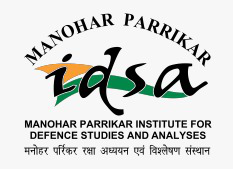The Centre tracks relations between India and the countries of North America. US and Canadian internal developments are also monitored to have a better understanding of their role as drivers of foreign and domestic policies. The large Indian diaspora in these two countries also serves as a bridge for strengthening bilateral relations.
The Centre also actively tracks and analyses trends in strategic technologies, with principal focus on critical technologies and their implications for national security. It addresses evolving threats in space security and cyber security, ensuring comprehensive research into these critical domains. The other mandate of the Centre is to undertake research on Biological and Chemical Weapons with a focus on studying the dangers of proliferation and terrorism.
No posts of Books and Monograph.
War, when all else fails. The reasons for war could be ideological or for greater control over finite resources but war invariably has violence at its epicentre. Ethics and wars have rarely been concentric in human history; therefore, wars have seen the employment of all possible means. Victory, as the ultimate aim, has forced warring sides to look at multiple options and biological weapons are one such method. Biological weapons are as old as war itself and their primitive recorded use was centuries ago.
Biden has set an ambitious agenda to reinvigorate US global leadership by pursuing a proactive grand strategy. He will, however, have to reckon with the legacy of Trumpism that has made a significant imprint on American foreign policy.
China’s proposal for a new Internet Protocol (IP) is a reflection of its desire to revamp and mould the Internet. This is in line with its ambitions to rise to the “commanding heights” of the scientific and technological competition.
The era of non-alignment provides immense insights on how visionary leadership seeking to influence international politics could develop ideational frameworks to propel the grand strategy of their choosing.
While India’s decision to ban Chinese apps is legally tenable under both domestic IT laws and international trade rules, it is important that any ambiguity in the ban order that can be challenged at WTO is effectively addressed.
With the adoption of varied digital means in times of pandemic, the states are likely to witness increased cyberattacks. Absence of an effective response would only mean an open playground for perpetrators.
With digital threats becoming trickier, a more holistic approach towards cybersecurity would help create a vibrant digital healthcare environment.
It might be difficult to prove any weaponisation intent or man-made origins to the SARS-CoV-2. Yet, the mass deaths and disruption caused by the virus forebodes imminent exploitation of biological agents for political ends.
Riding the technology wave, China eyes global dominance of RMB as a reserve currency and a favourable international monetary environment for its economic development.
Humanity is much better equipped today to mitigate the loss in life and collateral economic damage resulting from a pandemic, as demonstrated through the deployment of new-age tools such as artificial intelligence, big data, machine learning, neural networks and internet of things.
With a new found celebrity status among the video conferencing applications, Zoom now faces a massive privacy and security threat as the platform’s default settings are not secure enough.



